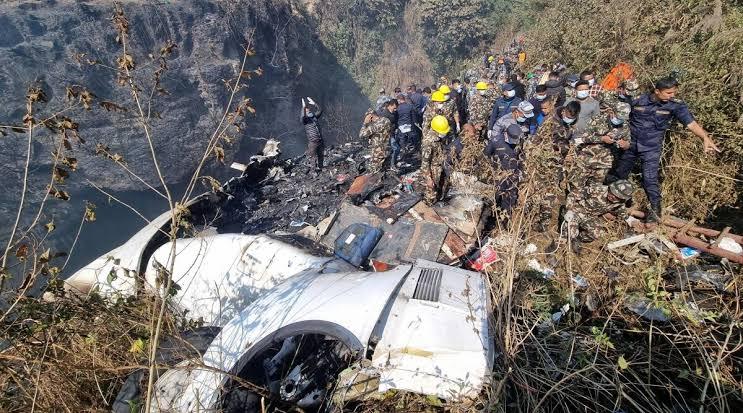The airline confirmed that 29 people died when a plane carrying 72 people crashed in Nepal on Sunday.
According to one local official, some survivors were taken to the hospital, but this was not confirmed by Yeti Airlines, which operated the flight, or a second official.
“We have recovered 29 bodies so far,” Yeti spokesman Sudarshan Bartaula told AFP.
He also stated that there were 15 foreigners on board, including five Indians, four Russians, and two Koreans.
On Sunday, shortly before 11:00 a.m., a flight from Kathmandu crashed between Pokhara’s domestic and international airports (0515 GMT).
The new international airport in Pokhara, which opened on January 1, is intended to gradually replace the old one, which was built in 1958. The city in central Nepal serves as a transit point for religious pilgrims and international trekkers.
After the crash, rescue workers were hosing down parts of the ATR 72 twin-engine turboprop’s wreckage as smoke drifted out of a ravine in front of hundreds of people.
The area was littered with what appeared to be aircraft parts, including seats.
Social media footage, which appeared to be shot shortly after the crash, showed raging flames on the ground and black smoke billowing into the sky from debris strewn across the crash site.
The footage could not be verified immediately by AFP.
Another unconfirmed video clip circulated online showed a plane flying low over a residential area and banking sharply to the left, followed by a loud explosion.
The incident was the latest to tarnish the Himalayan country’s poor aviation safety record.
Poor track record
Nepal’s air industry has expanded in recent years, transporting goods and people between remote areas, as well as foreign trekkers and climbers.
However, it has suffered from poor safety due to insufficient training and maintenance.
Due to safety concerns, the European Union has barred all Nepali airlines from using its airspace. Nepal lacks infrastructure for accurate weather forecasts, particularly in remote areas with difficult mountainous terrain, where fatal crashes have occurred in the past.
In the mountains, the weather can also change quickly, creating hazardous flying conditions.
In May 2022, a plane operated by Nepali carrier Tara Air crashed, killing all 22 people on board — 16 Nepalis, four Indians, and two Germans.
Shortly after taking off from Pokhara and heading for Jomsom, a popular trekking destination, air traffic control lost contact with the twin-propeller Twin Otter.
A day later, its wreckage was discovered strewn across a mountainside at around 14,500 feet (4,400 metres) above sea level.
Following the crash, authorities tightened regulations, including requiring planes to fly only if the weather forecast was favorable throughout the route.
A US-Bangla Airlines plane crashed-landed near Kathmandu’s notoriously difficult international airport in March 2018, killing 51 people.
That was Nepal’s deadliest accident since 1992, when a Pakistan International Airlines plane crashed on approach to Kathmandu, killing all 167 people on board.
Only two months before, a Thai Airways plane crashed near the same airport, killing 113 people.



